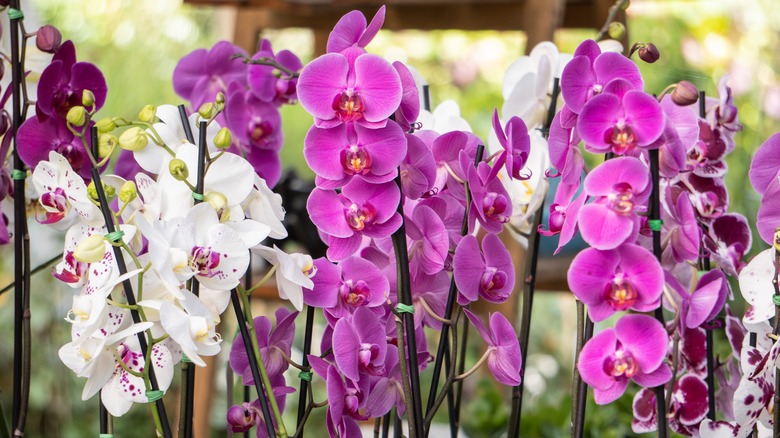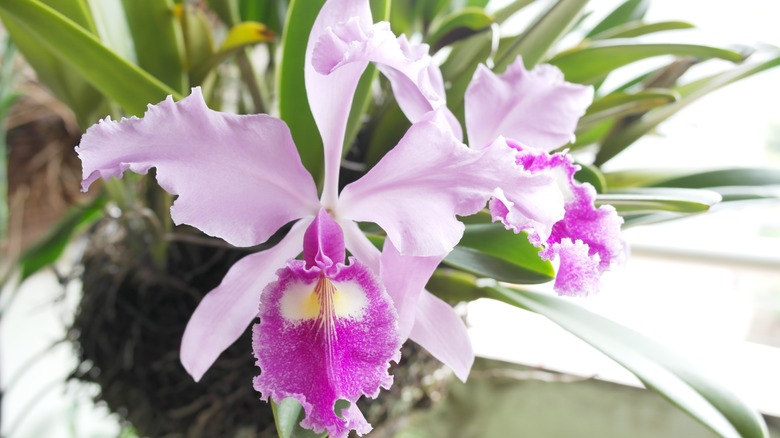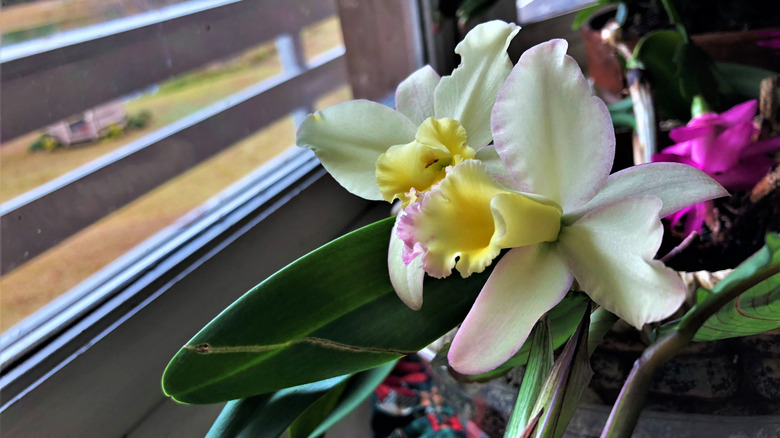The Cattleya Orchid Is The Perfect Houseplant For Big Flowers & Sweet Smells
If you have a flair for the dramatic but don't have the time to hover over a needy plant, the Cattleya orchid is perfect for you. Also called the corsage orchid due to its popular usage in boutonnieres and corsages, it can make the perfect elegant statement piece in your home. This orchid's elaborate yet delicate flowers hang like fine ornaments from their long, thin stems. The cattleya orchid is commonly found in white, pink, purple, yellow, red, and orange although the flowers can be dyed or painted in various colors to cater to different tastes.
It is the perfect house plant for anyone looking for big and tall flowers that will fill their space with a sweet vanilla and cinnamon smell for several months at a time. This flower is native mostly to Brazil where it grows naturally attached to other plants like trees but it can thrive in indoor spaces as well, growing up to 20 inches tall and producing multiple blossoms of large and dramatic fringed and frilled petal flowers. Cattleya orchids can do well with minimal care and can thrive in the hands of beginner plant parents.
How to grow cattleya orchids
Cattleya orchids are independent plants that want to be left alone to do their thing. Apart from an orchid-specific potting mix, they don't need anything fancy to reach their full blooming potential. You can make orchid potting mix with fir bark, horticultural charcoal, fine coconut husk chips, and perlite. Alternatively, you can buy ready-made potting mix and save yourself the trouble of getting all the measurements right. The right potting mix and a weekly watering schedule are important to ensure your flower has proper drainage and isn't sitting in too much moisture that will put it at risk of root rot and other diseases caused by overwatering.
Cattleya orchids are naturally found in warm and humid climates so if you can replicate that environment, they are bound to feel right at home. This would mean maintaining temperatures of 70 to 85 degrees Fahrenheit with high humidity levels of 40-70% and good air circulation. Despite the plant's resilience and minimal water needs, the flowers and petals are still delicate. Cattleya orchids need brightness but they don't do well in direct sunlight. While you might be able to get away with some occasional morning sun exposure, it would be best if you placed your flower in a brightly lit room away from direct sunlight.
Things to keep in mind
So you've provided your cattleya orchid with the perfect conditions to grow and you can't wait for the scent of cinnamon and vanilla to fill up your home, but your plant isn't blooming. You might be tempted to fertilize, repot, water more frequently, or let your orchid get more sun in the hopes of forcing it to bloom, but this might only make matters worse.
Orchids can still be perfectly healthy even if they aren't blooming. The American Orchid Society suggests regularly using a 20-20-20 fertilizer to supplement your plant's growth, but be mindful that overfeeding your orchid can be harmful. Too much fertilizer can make your plant redirect its nutrients towards its leaves which will result in more foliage and stems without flowers. This also increases the risk of damaging your plant's leaves and roots since all those extra nutrients from the fertilizer can create moisture and cause fertilizer burn or root rot. Also, try not to repot your flower often or expose it to direct sunlight to rush things along. An orchid's roots don't like being tampered with, especially during blooming season and direct sunlight could cause the leaves to deteriorate, making them anemic. Only repot your flowers if the roots are starting to outgrow your pot or when the potting mix has decomposed.


